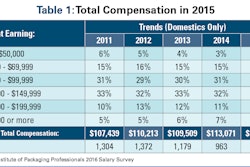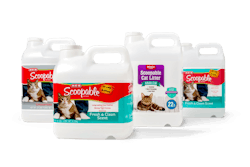Why? Simply because a decision based on bad data is necessarily a bad decision, the kind that will subject your company to unnecessary “solutions” and “fixes” that wouldn’t be applied if the correct data had been presented in the first place. With no data, you’re in the dark, but at least you’re not trying to fix a problem that doesn’t exist.
One of the key milestones to a successful product launch involves testing your product and package system to verify a functional design. When it comes to testing, there are many options available. A decision that many companies face during this time is, “do I test in-house or do I outsource a third-party test lab to complete my testing?” If available, most companies will often opt to test in house due to convenience, cost savings, and keeping their intellectual property behind closed doors. However, sometimes that option is not available and utilizing a third-party test lab is required. Doing a quick search using the Internet, you realize there is an abundance of choices available. Questions quickly arise such as, “How do you choose the correct test lab?”, “What do all of these lab certifications mean?”, “How will I ensure the data I obtain will be reliable and understandable?” All very viable questions, and if this is your first time utilizing a third-party test lab, it’s only normal to be uneasy with the overwhelming amount of choices.
First off, rest assured that no lab will knowingly sell bad data to you. However, some labs are unaware that their data might be suspect. At a bare minimum, a laboratory should have its equipment and instrumentation calibrated once a year due to the wear and tear of everyday usage. Data drift is a very real issue and primarily depends on the intensity of the tests being done or how abusive the tests are to the equipment and instrumentation.
With cost being the main driver of many vital decisions, most companies will attempt to perform a map of a product’s package system using a method known as margin testing. Margin testing is performed to design a perfect package for your product. This product is neither under packaged nor over packaged. This package is designed specifically for your product’s distribution environment. When performing margin testing, it’s mandatory to base your design using 100% reliable data. This is because the designed package is the leanest possible solution, while still providing adequate protection during shipment. In these cases, laboratories that are certified to ISO/IEC 17025 should be the top choices due to their strict requirements for the competence in testing and calibration practices. Without strict calibration requirements, values such as accelerometer readings could drift up to 5% to 10% a year! This is a very extreme case, but it also means that the testing conducted will be either an over test or under test. More important, this additional 5% to 10% can easily cause your package system to be too lean (causing product damages during shipment) or too conservative (causing packaging and supply chain wastes). To further emphasize its significance, a previous study from a large printer manufacturer showed that shaving a few millimeters off foam design resulted in a company cost savings of over a few hundred thousand dollars. This type of fine tuning is only possible by leveraging 100% accurate data.
A second reason for using a certified laboratory is simply the validation of meeting the minimum product or package specifications. This can be for any dynamic data point obtained during testing. Some examples: deceleration values, shock intensities, vibration intensities, resonant frequencies with amplifications, compression values, temperature values, humidity values, and pressure values. These values are often non-negotiable and define the minimum build requirements for your product and/or package. If anything fails these criteria, it’s back to the drawing board with product redesigns or packaging fixes. Without a certified test lab to ensure the data is trustworthy and reliable, over testing may result. If the result of over testing causes failures, a Type I error is present where one is left chasing and fixing a problem that does not actually exist. This will ultimately result in more testing, over designing, and possibly a change in the critical path to reach product launch. On the other hand, if under testing is present, a Type II error occurs where one is left with a false sense of security when you should prepare options for redesigns. Both errors are very fine lines and caused by using bad data to make a decision about a design.
Next time you’re looking for a third-party test lab, be aware if they’re certified and if their equipment and instrumentation is properly maintained. Bad data can be the driver of many headaches and pains. Without data, the typical designer is cautious. With bad data, that same designer is guaranteed to go in the wrong direction.
Edmund Tang ([email protected]) is an adjunct professor in the packaging program at San Jose State University.


























